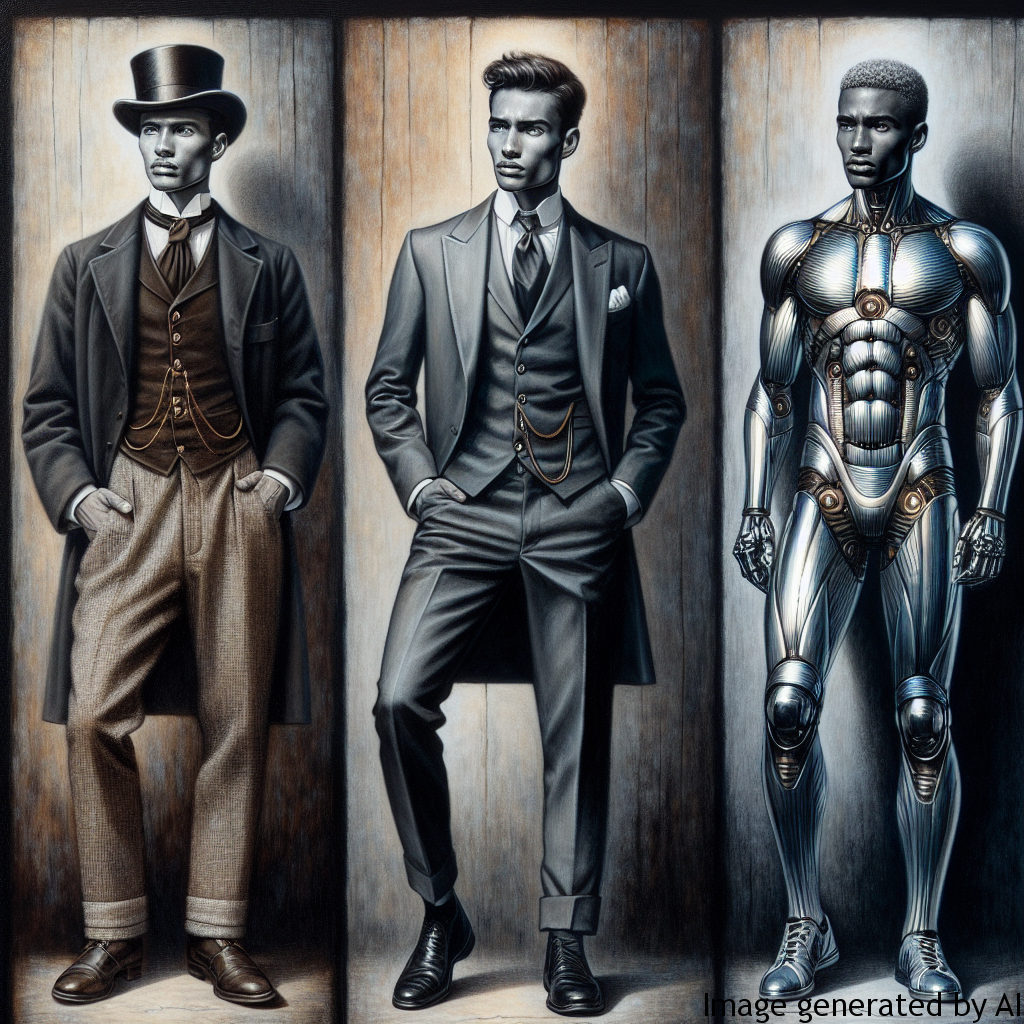Introduction
The world of men’s fashion has come a long way from heavily buttoned up to ultra-modern, sleek and bold styles. The progression of men’s fashion over the last century is a testament to the changing definitions of masculinity. Not so long ago, the concept of men being fashionable was associated with vanity and was largely frowned upon. Now, it’s a rapidly expanding industry with men taking center stage. This progression is deeply linked with the expectations of society regarding masculinity and how they have affected the psychological health of men.
Gender Expectations and Their Impact on Men’s Mental Health
The Issue of ‘Manly’ Dress code
Cultural expectations of men have been set at a high peak, from how they should behave, talk, and even dress. For a long time, men have been expected to dress in a certain ‘manly’ way, usually involving conservative and colorless clothing. The fear and the pressure to not appear weak or feminine can limit men’s choices and affect their well-being and self-expression
Mental Health Consequences
This kind of repressive mentality where men are unable to freely express themselves through fashion can lead to stress, anxiety, and depression. It also suppresses their creative instincts and can make them feel boxed in. It turns out that the freedom to express oneself, including in clothing styles, is vital for psychological health.
Examples of How Gender Roles Can Impact Men’s Lives
From the earliest years of male childhood, blue is chosen over pink, action figures over dolls, and this grows into a more prominent differentiation in clothing as we come of age. Men are expected to be tough, rugged, and effortlessly stylish without being too ‘into’ fashion – a double standard that can lead to internal conflict.
In workplaces, traditional, sober colors are usually the preferred choice for men. Anything out of the norm may raise eyebrows, thereby putting unnecessary pressure on men to conform. It can impede a man’s comfort and confidence in his workplace and may even affect his productivity.
Tips to Improve Psychological Health Considering Gender Roles
Understanding the correlation between dress codes, gender roles, and men’s mental health is step one. Then it is about using fashion as a tool of self-expression instead of a symbol of masculinity. Here are a few tips:
- Embrace Individuality: Encourage men to choose fashion that fits their personality, comfort, and style.
- Comfort Over convention: If you feel good in what you wear, your confidence will shine through, irrespective of trends or conventions.
- Encourage Creativity: Fashion can be an excellent outlet for creativity. Allow your wardrobe to reflect your personal evolution.
- Seek Guidance: If you’re confused about your fashion identity, professional help like stylists or self-help sources like books, blogs, and online content can be of great help.
Conclusion
The transformation from classic to ultra-modern in men’s fashion is a tangible mark of changing gender expectations. By breaking the mold and endorsing individuals’ personal style choices, we create an environment that supports men’s psychological health and wellbeing. Remember, fashion trends come and go, but feeling comfortable and confident in your skin is timeless.

